(a) Given n resistors each of resistance R. How will you combine them to get the (i) maximum (ii) minimum effective resistance ? What is the ratio of the maximum to minimum resistance ?
(b) Given the resistances of 1Ω,2Ω,3Ω, how will you combine them to get an equivalent resistance of (i) (11/3)Ω (ii) (11/5)Ω (iii) 6Ω (iv) (6/11)Ω ?
(c) Determine the equivalent resistance of networks shown in Figure.

(a) Total number of resistors = n
Resistance of each resistor = R
(i) When n resistors are connected in series, effective resistances R1 is the maximum given by the product nR
Hence, maximum resistance of the combination, R1=nR
(ii) When n resistors are connected in parallel, the effective resistance (R2) is the minimum, given by ratio Rn
Hence, minium resistance of the combination, R2=Rn
(iii) The ratio of the maximum to the minimum resistance is,
R1R2=nRRn=n2
(b) The resistance of the given resistors is,
R1=1Ω,R2=2Ω,R3=3Ω2
(i) Equilivalent resistance, R=113Ω
Consider the following combination of the resistors

Equilivalent resistance of the circuit is given by,
R=2×12+1+3=23+3=113Ω
Equilivalent resistance of the circuit is given by,
R=2×12+1+3=23+3=113Ω
(ii) Equilivalent resistance, R=115Ω
Consider the following combination of the resistors

Equilvalent resistance of the circuit is given by,
R'=2×32+3+1=65+1=115Ω
(iii) Equivalent resistance. R=6Ω
Consider the series combination of the resistor, as shown in the given circuit

Equivalent resistane of the circuit is given by the sum,
R=1+2+3=6Ω
(iv) Equivalent resistance, R=611Ω
Consider the series combination of the resistors, as shown in the given circuit
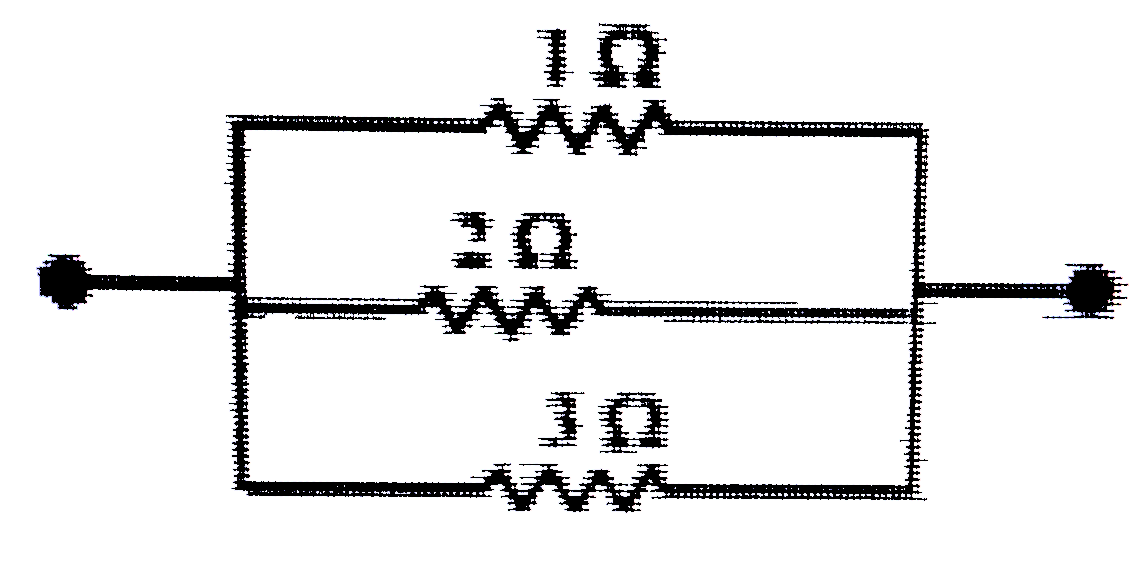
Equivalent resistance of the circuit is given by
R=1×2×31×+2×3+3×1=611Ω
(c) (a) It can be observed from the given that in the first small loop, two resistors of resistane 1Ω each are connected in series.
Hence, their equivalent resistance =(1+1)=2Ω
It can also be observed that two resistors of resistance 2Ω each are connected in series. Hence, their equivalent resistance =(2+2)=4Ω
Therefore, the circuit can be redrawn as

It can be observed that 2Ωand4Ω resistors are connected in parallel in all the four loops. Hence equivalent resistance (R) of each loop is given by
R=2×42+4=86=43Ω
The circuit reduces to,

All the four resistors are connected in series.
Hence, equilvalent resistance of the given circuit is 43×4=163Ω
(b) It can be observed from the given circuit that five resistors of resistance R each are connected in series.
Hence, equivalent resistance of the circuit =R+R+R+R+R=5R.
Similar Questions
Given n resistors each of resistance R, how will you combine them to get the (i) maximum, and (ii) minimum effective resistance? What is the ratio of the maximum to minimum resistance?
View SolutionGiven n resistors each of resistane R, how will you combine them to get the (i) maximum, (ii) minimum effective resistance ? What is the ratio of the maximum to minimum resistance ?
View Solution
Knowledge Check
- Question 1 - Select One
If you are provided three resistance 2Ω,3Ω and 6Ω. How will you connect them so as to obtain the equivalent resistance of 4Ω
A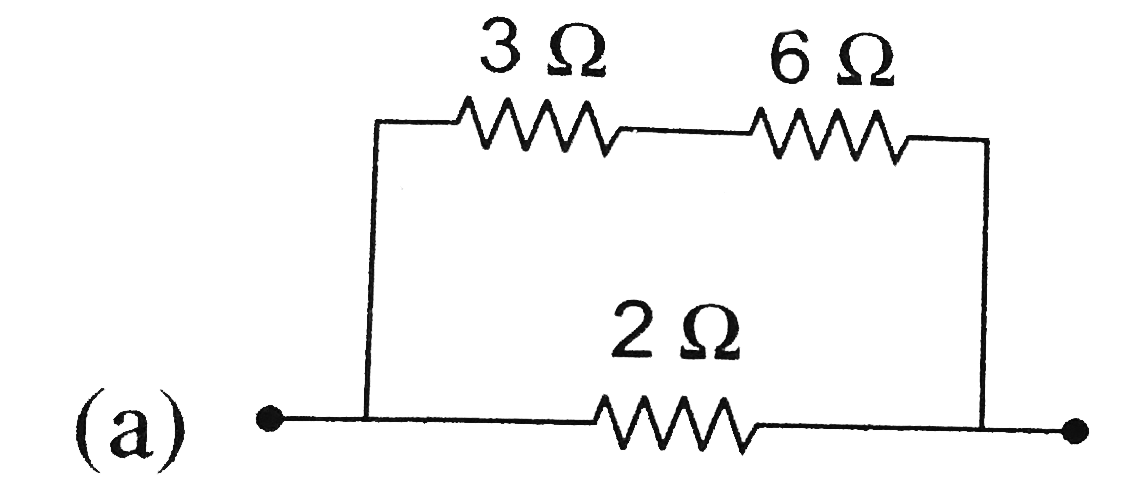 B
B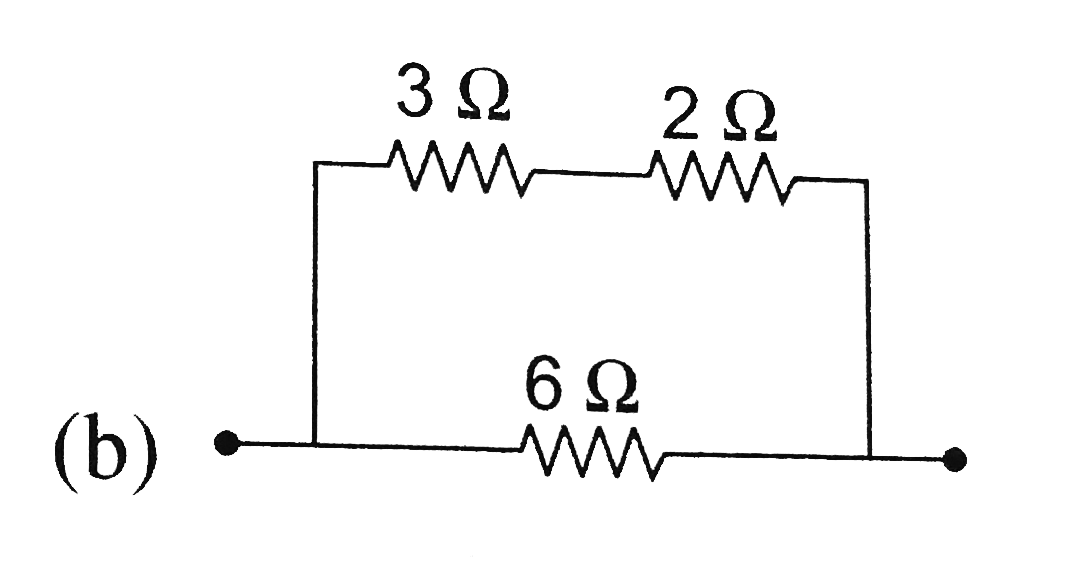 C
C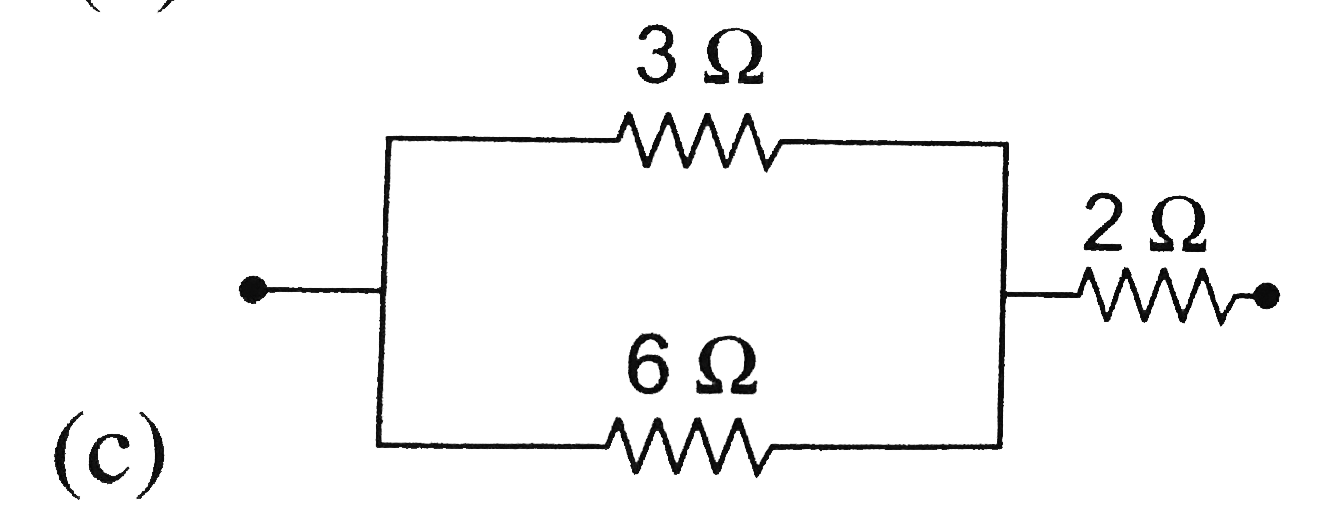 Dnone
Dnone - Question 2 - Select One
If you are provided three resistances 2Ω,3Ω and 6Ω. How will you connect then so as to obtain the equivalent resistance of 4Ω ?
A B
B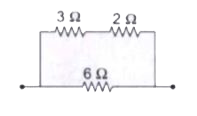 C
C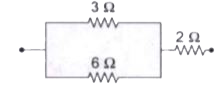 Dnone of these
Dnone of these
Given the resistances of 1Ω,2Ωand3Ω. How will you combine them to get an equivalent resistance of
(i) 113Ω ?
(ii) 115Ω ?View SolutionGiven the resistances of 1Ω,2Ω,3Ω how will we combine them to get an equivalent resistance of (i) (113)Ω,(ii)(115)Ω,(iii)6Ω,(iv)(611)Ω ?
View SolutionGiven the resistance of 1Ω,2Ω,3Ω, how will you combine them to get an e3quivalent resistance of :
113Ω (ii)115Ω (iii)6Ω 611Ω ?View SolutionGiven three resistors of resistances 1Ω,2Ωand3Ω. How will you combine them to get an equivalent resistance of 115Ω ?
View SolutionHow can the resistances of 2Ω,3Ω and 6Ω be connected to give an effective resistance of 4Ω ?
View SolutionHow will you join the resistors of resistances 3Ω,6Ω and 8Ω to get an equivalent resistance of 10Ω?
View Solution

